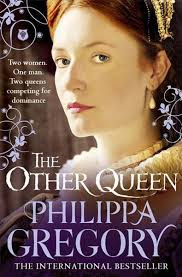With the end semester examinations over, there I was with an almost indigestible amount of free time on my hands. I was ready to lay my hands on almost anything to pass my time, partly to try and forget the slew of horrible grades post the exams. It was during that time that I happened to chance upon this book ‘The Other Queen’ by Ms. Philippa Gregory.
Looks can be deceptive though. An outward appearance that is demure and a word count that isn’t exactly what an avid book reader would call inspiring, my initial reaction was skepticism. However, with barely anything else to humour me, I delved into it. However, as I finished it, I could not help having a sad smile on my face. This book has stayed with me since then. If you are in the same state as mine, read on to know more about the book.
The premise of the book is fairly simple. The troubled Mary, Queen of Scots has been hounded out of her realm by the unruly Scottish nobles who can’t stomach the fact that they are being ruled over by a woman. Kicked out of her country she arrives in England, then ruled over by Queen Elizabeth, Mary’s cousin once removed. The story chronicles, majorly, the stay of Mary with George Talbot, a loyal baron of the English queen and his sharp wife Bess.
The book is a refreshing read and filled with simple yet evocative penmanship. Ms. Gregory untwines the intricacies of the then Tudor politics, of which the Queen of Scots was at the very epicenter, with lucid ease. Her style of using only three POV characters, namely Mary, George and Bess helps unclutter the narrative and present a readable story which entertains you and not school you in English history like a textbook.
The Other Queen avoids being cumbersome by sparing us the unnecessary details of English demographics at the time. The entire Catholic-Protestant conflict of the time is simplified to a very basic level. Ms. Gregory instead focuses on bringing out the inner demons of her characters. This humanized approach towards characters which some of us may only have encountered as being mentioned coldly in some book or a documentary goes a long way, undoubtedly the USP of the book.
For most part of history, George Talbot and his wife merely form a small blip in the tumultuous life radar of the colourful Scottish Queen. This book skillfully unravels this underrated chapter of Mary’s life where Mary spent a sizeable chunk of her captive years in England. And it isn’t just about that. The wondrously emotive description, sprinkled with some dry humour at times, of these years is a winning clincher.
The character development of all three major characters is quite organic and unhastened. You really feel the dilemma that George faces when he has to choose between his loyalty to one queen and an irresistible magnetic attraction to another queen. The troubled emotions that surge through his body strike some raw chord deep down inside us.
Simultaneously, one can’t dismiss the level-headed (but painfully ambitious) Bess of Hardwicke, a strong independent woman, something that was quite a rare sight in Elizabethan England. You nod your head in agreement when she laments how this Scottish queen’s extravagance is leeching off all her family’s finances, can’t stop admiring her foresight when she proposes marriage of her children to the House Stuart but at the same time resent her lightly for the cold treatment she metes out to the poor friendless foreign queen. This is one character you will remain ambiguous about till the end.
However, the real grey character that Ms. Gregory presents to us is of Mary, Queen of Scots. Unlike the usual binary characterization that most historical accounts give to us of either a scheming seductress who uses her sex appeal to ensnare young Catholic men or that of a poor hounded political pariah, pious and innocent of all the allegations laid at her charge, here Ms. Gregory passes no judgment for most part. She lets us savour the moody Scottish queen in all her idiosyncrasies, her impossible love for Talbot, her sorry captivity and the schemes that go on to liberate her and place her on the English throne. She let’s these conflicting traits come to the fore for her reader to enjoy, leaving that judgement to the reader.
Lastly, the creative liberties that the writer has taken for narration are all but forgotten. Yes, given that it’s history and most stuff is anyway subject to interpretation, Ms. Gregory takes what is convenient for her storyline and twists a few minor things here and there. But the changes add a sweet flavor that even puritans won’t discredit.
So the verdict is plain and simple. The book is a nice stroll in history with colourful characterization and a vivid narrative. It has its emotionally gripping moments (watch out for a nice one between George and Mary and also one just before Duke of Norfolk’s execution) packed into a small book, enough to be finished in two days if one is fast enough. Read up, you won’t regret it.
Happy reading!
Review by Aparajeya Dash
